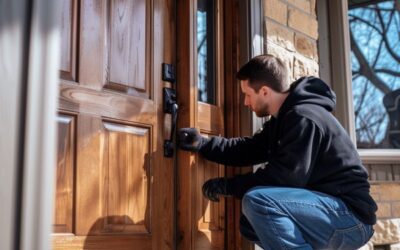6 Proven Ways to Protect Your Home in a Storm
Florida homeowners face the challenge of safeguarding their properties from severe weather events like hurricanes yearly. With an average of 12 tropical storms and six hurricanes forming over the Atlantic Ocean, Caribbean Sea, or Gulf of Mexico during the hurricane season, taking proactive steps to protect your home is essential. This guide explores six proven ways to fortify your residence against storm damage, helping you preserve your most valuable asset and ensure the safety of your loved ones.
 1. Reinforce Windows and Doors:
1. Reinforce Windows and Doors:
Windows and doors are highly vulnerable areas of your home during a hurricane. Installing impact-resistant windows and doors protects your home from hurricane-force winds and flying debris.
FEMA’s guide states that impact-resistant windows and doors are designed to withstand the impact of windborne debris and high winds, helping to maintain the building’s envelope and prevent interior damage. Impact windows also offer energy efficiency benefits and enhanced security features. When selecting impact windows for your Florida home, consider the product’s design pressure rating, glass thickness, and frame material to ensure optimal protection.
2. Seal Windows and Doors:
Proper sealing around windows and doors is another critical aspect of reinforcement. The U.S. Department of Energy emphasizes that proper sealing can improve a home’s energy efficiency and weather resistance, preventing wind and water infiltration during a storm. Use high-quality weatherstripping, caulk, and door sweeps to effectively seal your windows and doors. Pay close attention to any gaps or cracks around the frames, and regularly inspect and replace worn or damaged seals to maintain optimal protection.
3. Secure Your Roof:
Your roof plays a critical role in protecting your home from severe weather. High winds can cause significant damage to roof shingles, leading to leaks and interior damage. The Insurance Institute for Business & Home Safety advises regularly inspecting your roof for signs of wear and tear, such as curling, cracked, or missing shingles, and promptly addressing any issues.
Proper installation and maintenance of roof shingles are also essential, as a NOAA fact sheet warns that wind can lift and tear shingles off the roof, exposing the underlayment and roof deck to the elements. Consider hiring a professional roofing contractor to assess your roof’s condition and make necessary repairs or upgrades, such as installing hurricane straps or clips to secure the roof deck to the framing.
 4. Maintain Landscaping:
4. Maintain Landscaping:
Strategic landscaping around your home can help mitigate storm damage. FEMA’s “Landscaping for Disaster Resistance” guide recommends trimming trees near your house to prevent branches from falling on your roof or windows during high winds.
Well-maintained landscaping can also help absorb excess water, reducing the risk of flooding. When planning your landscaping, choose native plants with deep root systems that can help stabilize the soil and resist wind damage. Regularly prune trees and shrubs to remove dead or weakened branches, and avoid planting large trees too close to your home’s foundation or utility lines.
5. Inspect and Maintain Your Foundation:
Inspecting and maintaining your home’s foundation is another critical aspect of protecting your home in a storm. Foundation damage can occur during floods and other natural disasters, compromising your home’s structural integrity. A FEMA publication advises homeowners to regularly inspect the foundation for cracks and other signs of damage and promptly address any issues.
To prevent water from seeping into your foundation during a storm, ensure proper grading around your home’s perimeter, directing water away from the foundation. Installing a sump pump and maintaining gutters and downspouts can also help prevent water damage to your foundation.
6. Work with Experienced Professionals:
Working with experienced professionals is essential when protecting your home from storms. As a trusted hurricane protection expert serving Southwest Florida, Mr. Build understands the unique challenges homeowners face in this region.
With over four decades of experience in providing high-quality home improvement services, including impact windows, hurricane shutters, and roof repairs, Mr. Build has the knowledge and expertise to help you safeguard your property. By collaborating with a reputable company like Mr. Build, you can benefit from their extensive experience, access to top-quality products, and professional installation services, ensuring that your home is well-prepared to withstand the forces of nature.
Conclusion:
In Southwest Florida, to protect your home in a storm and from the devastating effects of hurricanes requires a multifaceted approach. Implementing these six proven ways to fortify your residence can significantly reduce the risk of storm damage, preserve your property’s value, and ensure your family’s safety.
Stay informed about the latest storm protection technologies and best practices, work with experienced professionals like Mr. Build, and take proactive steps to protect your home. Remember, investing in storm protection is not just a wise financial decision but also a commitment to the well-being of your loved ones and the resilience of your community in the face of severe weather events.





